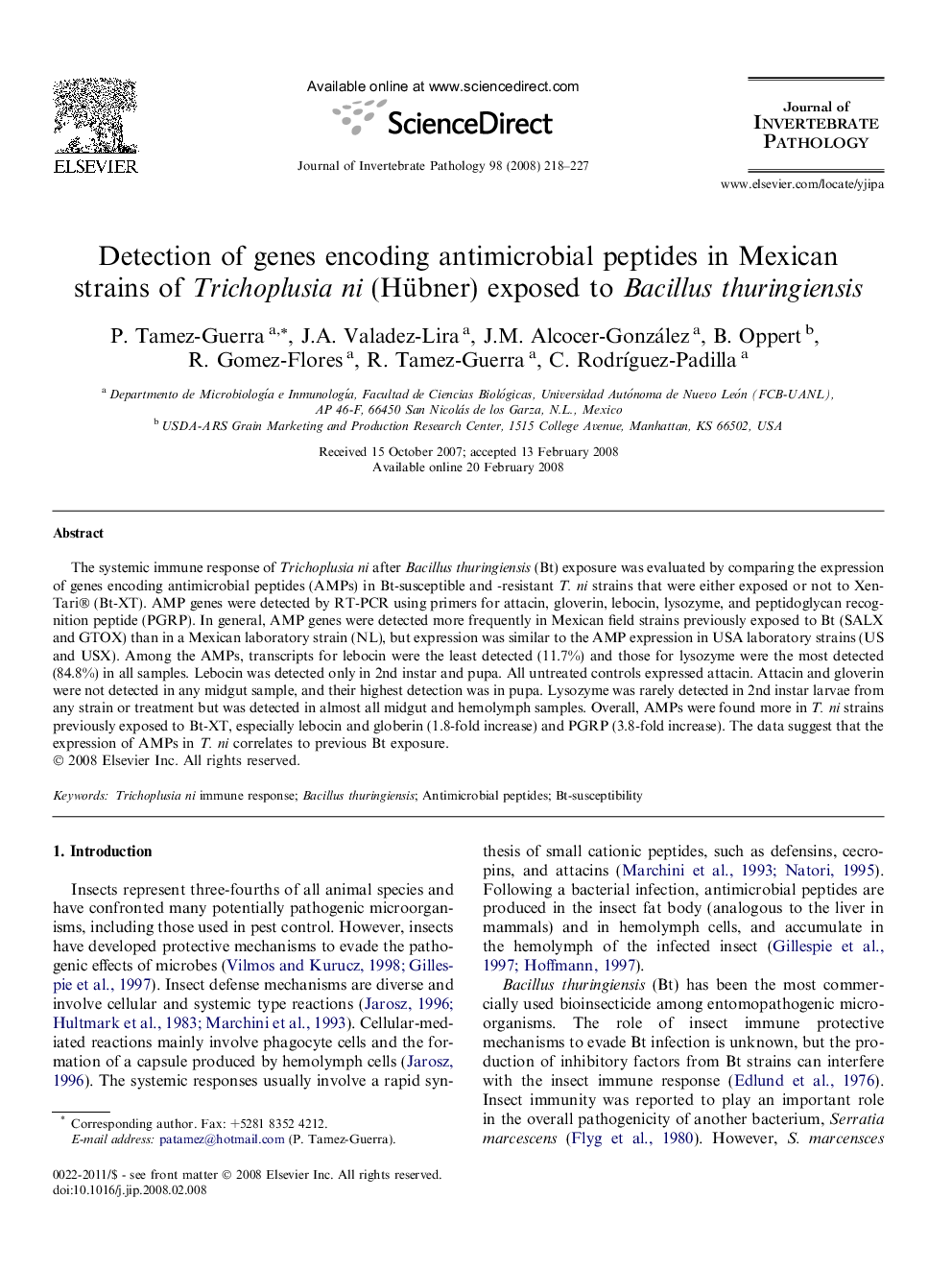| Article ID | Journal | Published Year | Pages | File Type |
|---|---|---|---|---|
| 4558552 | Journal of Invertebrate Pathology | 2008 | 10 Pages |
The systemic immune response of Trichoplusia ni after Bacillus thuringiensis (Bt) exposure was evaluated by comparing the expression of genes encoding antimicrobial peptides (AMPs) in Bt-susceptible and -resistant T. ni strains that were either exposed or not to XenTari® (Bt-XT). AMP genes were detected by RT-PCR using primers for attacin, gloverin, lebocin, lysozyme, and peptidoglycan recognition peptide (PGRP). In general, AMP genes were detected more frequently in Mexican field strains previously exposed to Bt (SALX and GTOX) than in a Mexican laboratory strain (NL), but expression was similar to the AMP expression in USA laboratory strains (US and USX). Among the AMPs, transcripts for lebocin were the least detected (11.7%) and those for lysozyme were the most detected (84.8%) in all samples. Lebocin was detected only in 2nd instar and pupa. All untreated controls expressed attacin. Attacin and gloverin were not detected in any midgut sample, and their highest detection was in pupa. Lysozyme was rarely detected in 2nd instar larvae from any strain or treatment but was detected in almost all midgut and hemolymph samples. Overall, AMPs were found more in T. ni strains previously exposed to Bt-XT, especially lebocin and globerin (1.8-fold increase) and PGRP (3.8-fold increase). The data suggest that the expression of AMPs in T. ni correlates to previous Bt exposure.
